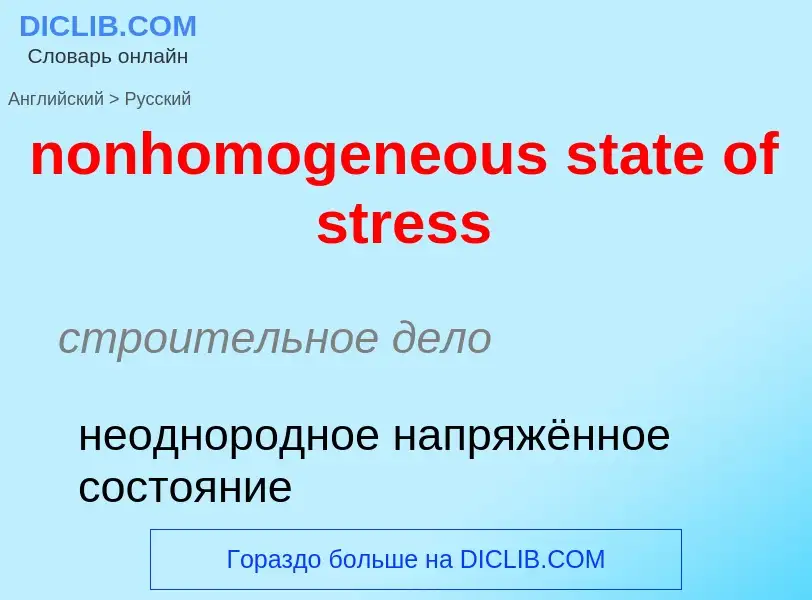Перевод и анализ слов искусственным интеллектом ChatGPT
На этой странице Вы можете получить подробный анализ слова или словосочетания, произведенный с помощью лучшей на сегодняшний день технологии искусственного интеллекта:
- как употребляется слово
- частота употребления
- используется оно чаще в устной или письменной речи
- варианты перевода слова
- примеры употребления (несколько фраз с переводом)
- этимология
nonhomogeneous state of stress - перевод на русский
строительное дело
неоднородное напряжённое состояние
[əd'və:siti]
общая лексика
неблагоприятная обстановка
существительное
общая лексика
напасти
несчастья
превратности судьбы
напасти, несчастья, бедствия
специальный термин
неблагоприятный фактор
неблагоприятная обстановка
общая лексика
экологический стресс
нагрузка на окружающую среду
нагрузка
обусловленная внешними условиями
воздействие на окружающую среду
нефтегазовая промышленность
экологический стресс, воздействие на окружающую среду
['dʒen(ə)rəlædəp'tei(ə)nsindrəum]
физиология
генеральный
общий адаптационный синдром
стресс
неврология
адаптационный общий синдром
медицина
физиологическая нагрузка
общая лексика
нервно-психическое напряжение
эмоциональный стресс
общая лексика
рабочая нагрузка
Определение
Википедия

Stress, either physiological, biological or psychological, is an organism's response to a stressor such as an environmental condition. Stress is the body's method of reacting to a condition such as a threat, challenge or physical and psychological barrier. There are two hormones that an individual produces during a stressful situation, these are well known as adrenaline and cortisol. There are two kinds of stress hormone levels. Resting (basal) cortisol levels are normal everyday quantities that are essential for standard functioning. Reactive cortisol levels are increases in cortisol in response to stressors. Stimuli that alter an organism's environment are responded to by multiple systems in the body. In humans and most mammals, the autonomic nervous system and hypothalamic-pituitary-adrenal (HPA) axis are the two major systems that respond to stress.
The sympathoadrenal medullary (SAM) axis may activate the fight-or-flight response through the sympathetic nervous system, which dedicates energy to more relevant bodily systems to acute adaptation to stress, while the parasympathetic nervous system returns the body to homeostasis.
The second major physiological stress-response center, the HPA axis, regulates the release of cortisol, which influences many bodily functions such as metabolic, psychological and immunological functions. The SAM and HPA axes are regulated by several brain regions, including the limbic system, prefrontal cortex, amygdala, hypothalamus, and stria terminalis. Through these mechanisms, stress can alter memory functions, reward, immune function, metabolism and susceptibility to diseases.
Disease risk is particularly pertinent to mental illnesses, whereby chronic or severe stress remains a common risk factor for several mental illnesses.






.jpg?width=200)
![Coping through [[laughter]] Coping through [[laughter]]](https://commons.wikimedia.org/wiki/Special:FilePath/Two people laughing.jpg?width=200)
